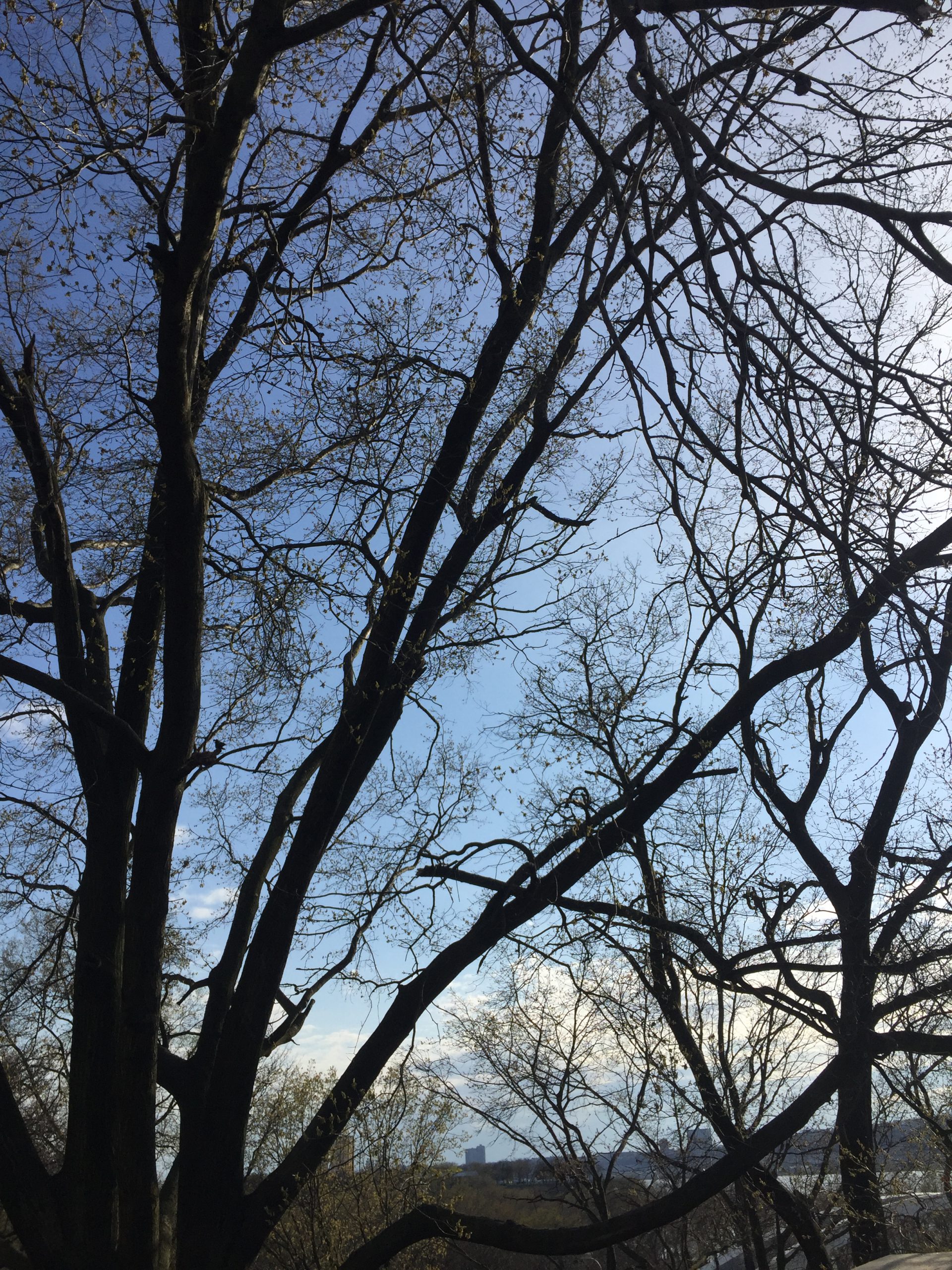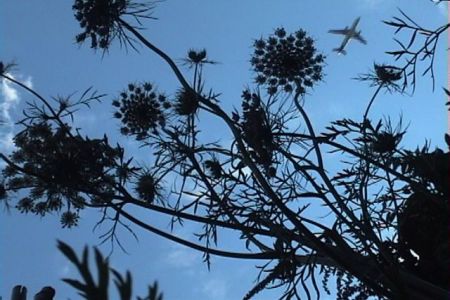I left on that afternoon. The sunflowers on Thames street saw me moving three suitcases.
The sunflowers were in the sunlight.
The train ran to the underground.
How can the sunflowers and the train meet?
I had never seen sunflowers when I took train.
Umbel
A flower cluster in which all stalks arise from the same center point.
the quiver of bone and the rings of a tree trunk
I don’t remember much from high school biology. What I can recall is that a bone’s capillary network is arranged in a series of concentric circles. This means that at the microscopic level, our insides resemble the rings of a tree trunk. This shared architecture has been running my mind. The trees on my block are just beginning to flower; the budding branches are tender and bright. As for myself, after weeks of eating chips and festering in my apartment, I am growing sour and more bloated by the day. How dare you! I think, glumly staring at the view from my window. Nobody is flourishing right now, but spring is a reminder some things are certain. The sun rises, flowers bloom. With each passing year a tree gains a new ring around its trunk and grows stronger, all the more able to weather what comes next.

Peach Blossom
I was looking for peach blossom in New York.
I went to Brooklyn Botanic Garden and just found some scattered flowers on the peach trees.
In my memory, the peach blossom in China looked like bulky pink clouds.
On Roosevelt Island, I found the cherry blossom. I told myself it looked like the peach blossom I was looking for.
Umbel: Brooklyn Botanical Garden
Reading the dictionary. Everyone wants to do this one day, don’t they? Like the Bible, or James Joyce’s Ulysseus, isn’t this task something we all will get around to accomplishing eventually in our lives? It’s been my role in this project to find words that resonate, surprise, and provoke the imagination. From the seemingly obscure and irrelevant to the profound and surprisingly forgotten, I have chosen words that send the imagination spinning. Umbel is probably our most botanical word, one that at first did not jump out at me, as it seemed so plant-specific, removed from any other realm of daily existence. But, simply put, I adored the sound of the word. Umbel. Umbel. Umbel. It just plain feels good on the tongue to say. Newly educated, I began to see umbrella-shaped flora all over town! Upon a bit deeper level of research, I discovered this is also the root word for umbrella? and so a lovely visual poem came to mind. I found a thriving carrot (yes, an umbel) plant one sunny day in the vegetable section of the Brooklyn Botanical Garden and then patiently awaited a rainstorm in downtown Brooklyn. The sky and the earth below determined the direction and timing of my production.
Botanical Exploration
In search of the umbrel with new flip camera in hand. Homage to LS
Plasticity
An experimental short based on the word “Umbel.”http://www.youtube.com/watch?v=NjGzkkx-59s
Looking for Umbels in the Big Apple
Umbel of Umbels: Coney Island Parachute Jump
The structure of the Coney Island Parachute Jump—planted in Queens in 1939, and repotted in Brooklyn 2 years later—has caught my eye with curiosity many a time. Yes, it evokes to some extend the Eiffel Tower, more for its metal rete than shape.
I could imagine this elongated mushroom be created by Buckminster Fuller as the beginnings of a geodesic weeping willow, designed to build the dome from within. Construction was halted at the discovery of this umbel extraordinaire. “Flowers!” begged the World’s Fair world, “Give it flowers for crying out loud!” And so they crafted flowers: humans in gondolas as peduncles growing the rachides holding the parachute as an inflorescence. Twelve inflorescent flowers pulled from Brooklyn’s soil in a 21-second journey to complete the Jump’s own inflorescence for mere moments prior to being wilted down in a 9-second drop of blossoming thrill… How I wish I’d lived here before 1968, the year the Jump flowered last. Yet, what foudroyant joy that Leni Schwendinger almost 40 years later pumped new life into the culminant carrot crown of Brooklyn, with her incandescent artistry. Gustave and Bucky would approve.
Umbel: View from below a carrot
Umbel: Shadows
It’s interesting to me that “umbel” comes from the Latin root “umbra,” meaning shadow. Umbel, then, describes not the flower itself, or even the shape of the flower, but rather the effect the flower has on its surroundings. Perhaps the word was chosen by an ant, relaxing in the shade of one such plant.

